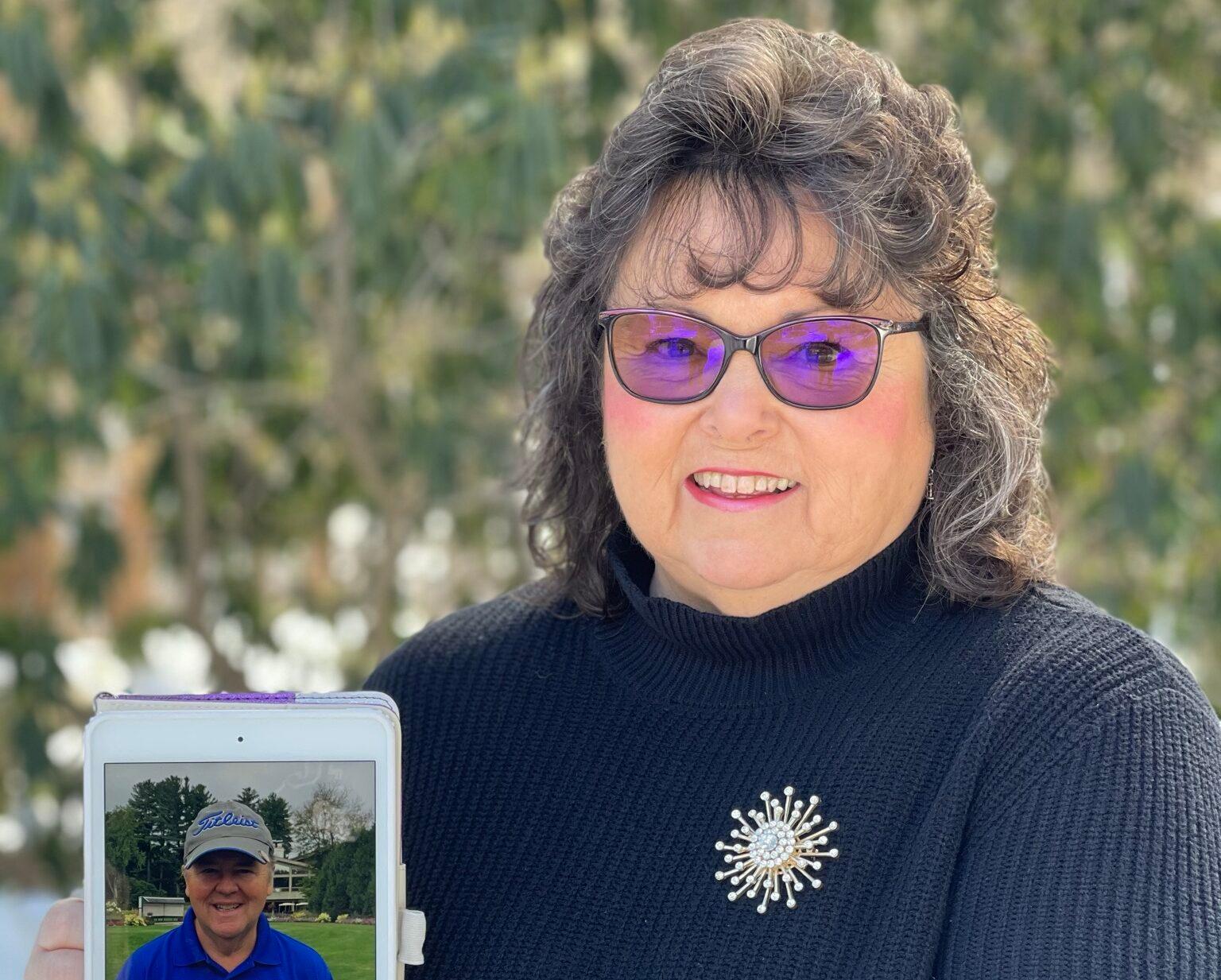Like all good Christmas stories, this one begins with a gift.
Kathy Clemenzi’s son gave her a 23andMe Health + Ancestry Kit for the holidays. He thought that Kathy, the self-appointed “family historian,” might enjoy using the kit to learn more about their ancestry and confirm some family stories passed down through the generations.
It was the perfect present.
“I’m always the one that looks into all the genealogy things and shares all the stories,” Kathy explained. “I even found out I’m 80 percent British and Irish – more than I expected!”
A medical mystery
Diving into her family history provided a welcome distraction during a dark period in Kathy’s life. For two years, her older brother had been suffering from an unknown illness that was slowly robbing him of his ability to travel and play golf, something he loved. It left him weak and dizzy. Even the simplest movements, like walking or climbing stairs, became difficult.

Desperation drove him from one specialist to the next — an ear, nose, and throat physician, a cardiologist, a neurosurgeon, a pulmonologist, and finally, a neurologist. But no one could identify the cause of his decline. His doctors were stumped.
“He was disintegrating,” Kathy recalled. “And no one could figure out why.”
A promising clue
Then a life-changing alert appeared on Kathy’s phone.
“One day, I got a message on my phone from 23andMe about a new genetic health risk report,” she said.
She logged in and clicked on her Hereditary Amyloidosis (TTR-Related) Genetic Health Risk report* and saw that she had a variant that increased her risk of developing the condition.
“I didn’t think much of [my reports] at first,” Kathy said. But she decided to share the report with her brother, who then shared it with his neurologist at the University of Massachusetts in Worcester.
As the neurologist combed through the 23andMe reports, her eyes lit up. “I think this might be what you have,” the neurologist told him. “You need to see a geneticist.”
Finally, a breakthrough
Genetic testing confirmed the neurologist’s hunch: Kathy’s brother had TTR-related hereditary amyloidosis.
TTR-related hereditary amyloidosis is a rare genetic condition caused by the build-up of a protein called transthyretin (TTR) in the body’s tissues and organs. This protein build-up, called amyloidosis, can damage the nerves, the heart, and other parts of the body.Symptoms vary widely and depend on how much–and where–the build-up of protein occurs. Because the condition can manifest in so many ways, misdiagnosis is common.
Slow improvement
A doctor referred Kathy’s brother to the Boston Amyloidosis Center, where he now receives an intravenous infusion of medication every three weeks to manage his symptoms.
“Right now there’s no cure, but he’s gained back 40 percent of his movement,” Kathy reported. Simply walking up steps or getting in and out of the car independently and other small milestones are cause for celebration.
“He’s getting better a little bit at a time. It’s no longer a death sentence,” she said.
Kathy and the rest of her siblings underwent clinical genetic testing for TTR-related hereditary amyloidosis. Her younger sister also learned that she has the same variant, which puts her at increased risk of developing the condition.
Though symptom-free, they travel to Boston regularly for testing and checkups. “We’re famous [at the Amyloidosis Center],” Kathy joked. “When we go, they know exactly who we are–we’re the ones with the 23andMe history!”
Writing a new chapter
Faced with these unexpected and challenging findings, Kathy and her siblings chose to write a new chapter in their family story. And they’ll share it with anyone who will listen.
“Love of family and curiosity started this journey,” Kathy explained. “If someone else hears this story and it saves another family–why not tell it?”
*The 23andMe PGS test uses qualitative genotyping to detect select clinically relevant variants in the genomic DNA of adults from saliva for the purpose of reporting and interpreting genetic health risks. It is not intended to diagnose any disease. Your ethnicity may affect the relevance of each report and how your genetic health risk results are interpreted. Each genetic health risk report describes if a person has variants associated with a higher risk of developing a disease, but does not describe a person’s overall risk of developing the disease. The test is not intended to tell you anything about your current state of health, or to be used to make medical decisions, including whether or not you should take a medication, how much of a medication you should take, or determine any treatment. The TTR-related hereditary amyloidosis genetic health risk report is indicated for reporting of V122I, V30M, and T60A variants in the TTR gene and describes if a person has variants associated with an increased risk of developing TTR-related hereditary amyloidosis. The majority of the variants included in this report have been most studied in people of African Americans, West African, Portuguese, Northern Swedish, Japanese, Irish, and British descent.




